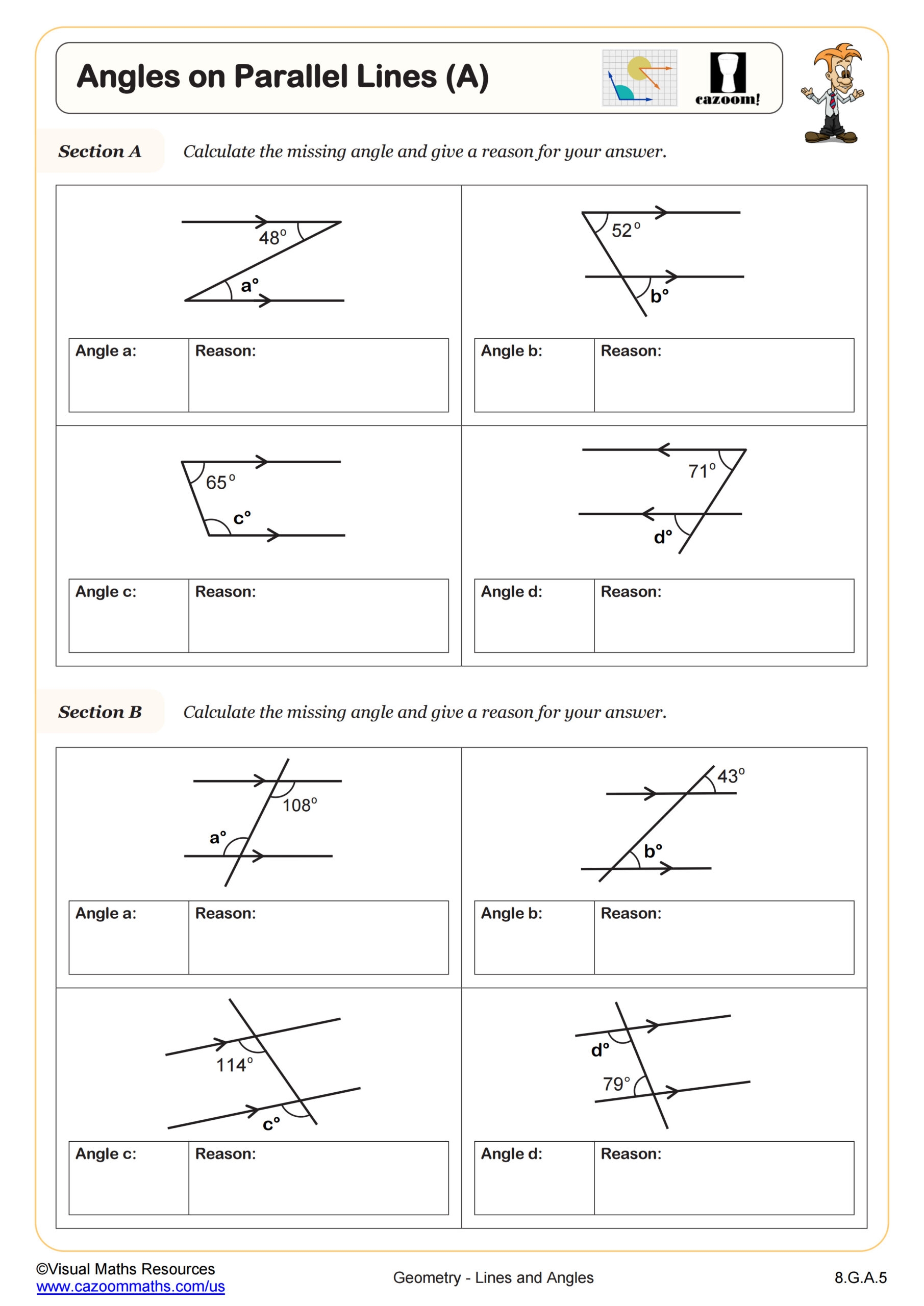When studying geometry, understanding the concept of angles formed by a transversal is essential. A transversal is a line that intersects two or more lines at distinct points. The angles formed by a transversal can help us analyze geometric figures and solve various problems related to angles and lines.
One way to practice and reinforce our knowledge of angles formed by a transversal is through worksheets. These worksheets typically consist of diagrams with lines intersected by a transversal, and students are required to identify and calculate the angles formed in each scenario. This hands-on approach helps students apply theoretical knowledge to practical situations and improve their problem-solving skills.
Angles Formed by a Transversal Worksheet
When working on a angles formed by a transversal worksheet, students encounter various types of angles such as corresponding angles, alternate interior angles, alternate exterior angles, and same-side interior angles. Identifying these angles correctly is crucial in determining their relationships and properties.
Corresponding angles are located on the same side of the transversal and in the same position with respect to the intersected lines. They are equal in measure and can be used to prove that two lines are parallel. Alternate interior angles are located inside the parallel lines and on opposite sides of the transversal. They are congruent and have a unique relationship in parallel lines. Alternate exterior angles are located outside the parallel lines and on opposite sides of the transversal. They are also congruent and play a significant role in geometry proofs.
Same-side interior angles are located inside the parallel lines and on the same side of the transversal. They are supplementary, meaning their measures add up to 180 degrees. By understanding the properties of these angles and how they relate to each other, students can solve complex problems involving angles formed by a transversal and parallel lines.
Working on angles formed by a transversal worksheets not only helps students practice their geometry skills but also enhances their critical thinking and logical reasoning abilities. By analyzing the relationships between angles and lines, students develop a deeper understanding of geometric concepts and improve their problem-solving strategies.
In conclusion, angles formed by a transversal worksheets are valuable tools for students to reinforce their knowledge of geometry and enhance their analytical skills. By actively engaging with these worksheets, students can solidify their understanding of angle properties and parallel lines, leading to improved performance in geometry and related subjects.

